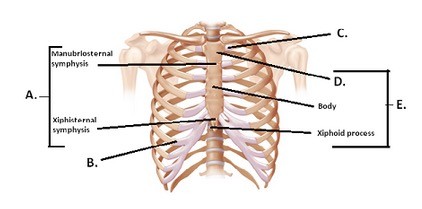Describe the areas of the heart supplied by the right and left coronary arteries
A) The right coronary artery supplies blood to left atrium and portions of both ventricles. The left coronary artery supplies blood to the right atrium, the conducting system, and interventricular septum.
B) The right coronary artery supplies blood to the right atrium, portions of both ventricles, and the conducting system. The left coronary artery supplies blood to the left ventricle, left atrium, and interventricular septum.
C) The right coronary artery supplies blood to the right atrium and right ventricle. The left coronary artery supplies blood to the left atrium, left ventricle, the conducting system, and interventricular septum.
D) The right coronary artery supplies blood to the conducting system and interventricular septum. The left coronary artery supplies blood to all four chambers.
E) The right coronary artery supplies blood to all four chambers. The left coronary artery supplies blood to the conducting system and interventricular septum.
Answer: B
You might also like to view...
This figure illustrates the microscopic anatomy of spongy bone. What bone feature does number 4 indicate?
A. Osteocyte in lacuna B. Trabeculae C. Osteon D. Canaliculus E. Perforating canal
 The figure illustrates the joints and bones of the rib cage. What does "E" represent?
The figure illustrates the joints and bones of the rib cage. What does "E" represent?
A. Manubrium B. Sternal symphyses C. Costochondral joint D. Sternum E. Sternocostal synchrondrosis
Which of the following illustrates a gradient?
A) more of something exists in one area than another and the two areas are connected B) equilibrium or balance between two unconnected areas C) maintenance of a relatively stable internal environment D) equal amounts of something exist in areas that are connected
A tracheotomy is an operation to make an opening in the trachea if there is an upper respiratory obstruction of airflow. Explain how ventilation is possible via this opening and why you don’t need to use your nose or mouth to bring air into your lungs.
What will be an ideal response?